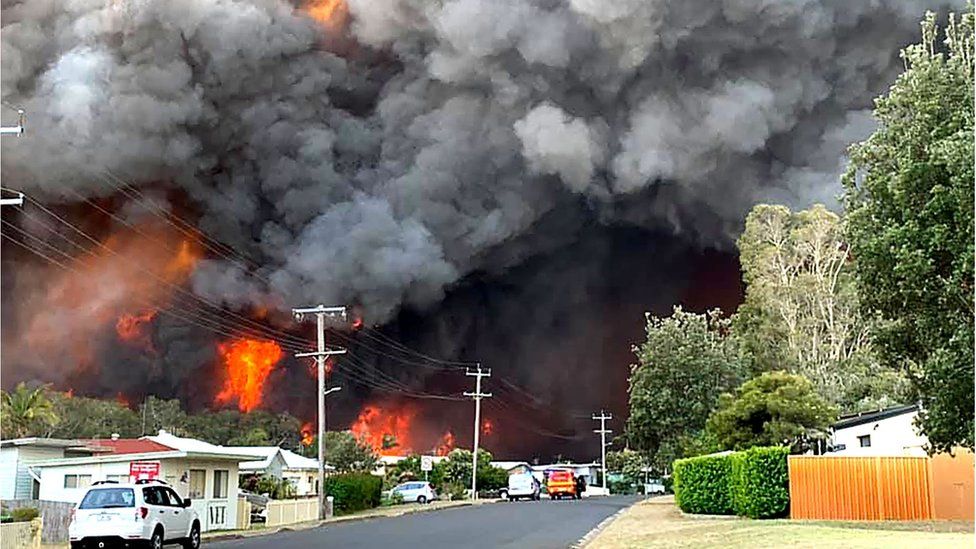Crafting Your Property's Safety: A Detailed Bushfire Management Plan Overview
Crafting Your Property's Safety: A Detailed Bushfire Management Plan Overview
Blog Article
Vital Tips for Bushfire Administration to Make Certain Fire Protection

Comprehending Bushfire Threat Degrees
Recognizing the varying degrees of bushfire risk is important for efficient preparation and preparation in mitigating potential hazards to residential properties and lives. Bushfire risk levels are generally classified based upon aspects such as weather conditions, gas schedule, topography, and historical fire habits. By comprehending these threat individuals, communities and levels can proactively apply strategies to lower vulnerability and enhance durability when faced with potential bushfire occasions.
The very first level of bushfire risk is reduced threat, where the likelihood of a bushfire happening and triggering significant injury is marginal. This level usually takes place during periods of reduced temperatures, modest moisture, and minimal wind rates. Moderate threat degrees suggest a raised capacity for bushfires due to intensifying climate condition or gas accessibility. High-risk levels indicate a considerable hazard, with problems conducive to rapid fire spread and extreme fire habits. Extreme threat degrees are the most critical, positioning imminent threat to properties and lives as a result of severe weather and highly combustible fuels.
Comprehending these bushfire risk degrees enables stakeholders to customize their preparedness and feedback activities as necessary, ensuring a efficient and proactive technique to bushfire administration.
Developing a Defensible Space
Efficient bushfire management begins with establishing a defensible room around properties to improve defense against prospective fire threats. A defensible space is a buffer zone that creates an obstacle between a structure and the surrounding flammable plant life. This room serves as an essential line of protection, offering firemans a safe area to run and assisting to lower the risk of a fire infecting the home.
When establishing a defensible room, it is vital to think about the layout of the home and the bordering landscape. Clearing up vegetation, particularly highly flammable plants, within a specific span of the building can aid prevent the quick spread of fires. Additionally, preserving a well-irrigated area around the residential or commercial property can additionally boost its defensibility.
Normal upkeep of the defensible area is essential to ensure its effectiveness. This consists of trimming overhanging branches, getting rid of dead vegetation, and maintaining the location devoid of debris. By spending effort and time into creating and keeping a defensible area, homeowner can considerably boost their chances of about his protecting their homes and properties throughout a bushfire.
Carrying Out Fireproof Landscaping
When designing landscapes to reduce the danger of bushfires, incorporating fireproof elements is important for improving building security and lowering fire risks. Select plants with high moisture content, low oil content, and minimal dead plant life to minimize the risk of fire spread.

Creating an Emergency Situation Emptying Plan
Developing a detailed emergency situation evacuation plan is important for guaranteeing the security and well-being of people throughout potential bushfire cases (BMP). An efficient evacuation strategy ought to detail clear treatments to comply with in the event of a bushfire threat, consisting of marked discharge paths, setting up factors, and communication methods
To begin producing an emergency situation emptying plan, it is crucial to analyze the specific dangers and vulnerabilities of your location. Determine numerous emptying routes that lead to secure areas far from the fire, thinking about variables such as terrain, road accessibility, and potential risks. Develop interaction networks to alert homeowners of an upcoming emptying, making use of techniques such as alarms, text you can try here signals, or door-to-door notifications.
Regularly evaluation and practice the discharge strategy with all citizens or area members to guarantee everyone understands their duties and roles. Conduct drills to check the efficiency of the strategy and make any necessary adjustments. By having a well-prepared evacuation strategy in position, you can enhance the possibilities of a organized and safe evacuation throughout a bushfire emergency situation.
Keeping Fire Safety Tools
After establishing a detailed emergency situation evacuation prepare for bushfire occurrences, it is imperative to prioritize the normal upkeep of fire safety and security devices to ensure ideal performance and readiness. Regular maintenance of fire safety devices such as fire extinguishers, smoke detectors, emergency alarm, and lawn sprinkler is crucial in safeguarding lives and residential or commercial property during a bushfire. Carrying out routine examinations, screening, and servicing of these tools by certified professionals is essential to assure they remain in functioning order when required.
Fire extinguishers should be examined frequently for stress degrees, noticeable damage, and proper capability. By faithfully maintaining fire safety and security devices, individuals can enhance their readiness and action capabilities in the event of a bushfire.
Conclusion
Finally, efficient bushfire monitoring entails comprehending risk levels, creating defensible areas, applying fireproof landscaping, establishing discharge strategies, and preserving fire security devices. By adhering to these crucial ideas, individuals can guarantee much better fire defense and security for their communities and residential or commercial properties. It is essential to prioritize aggressive actions to minimize the risks related to bushfires and to be gotten ready for emergencies.
By recognizing the subtleties of bushfire risk levels, developing defensible areas, carrying out fire-resistant landscaping, developing detailed discharge strategies, and making certain the maintenance of fire safety and security devices, neighborhoods and people can dramatically strengthen their strength versus the devastations of wildfires - BMP. These pointers are not only crucial for securing versus immediate fire risks yet additionally for fostering lasting fire defense approaches that can make a substantial distinction in the face of escalating bushfire hazards
High-risk degrees indicate a considerable threat, with problems helpful to rapid fire spread and severe fire behavior. Routine maintenance of fire security equipment such as fire extinguishers, smoke detectors, fire alarm systems, and sprinkler systems is critical in guarding lives and building during a bushfire.In final thought, efficient bushfire administration involves comprehending threat levels, developing defensible areas, carrying out fire-resistant go to website landscaping, creating discharge plans, and preserving fire safety and security tools.
Report this page